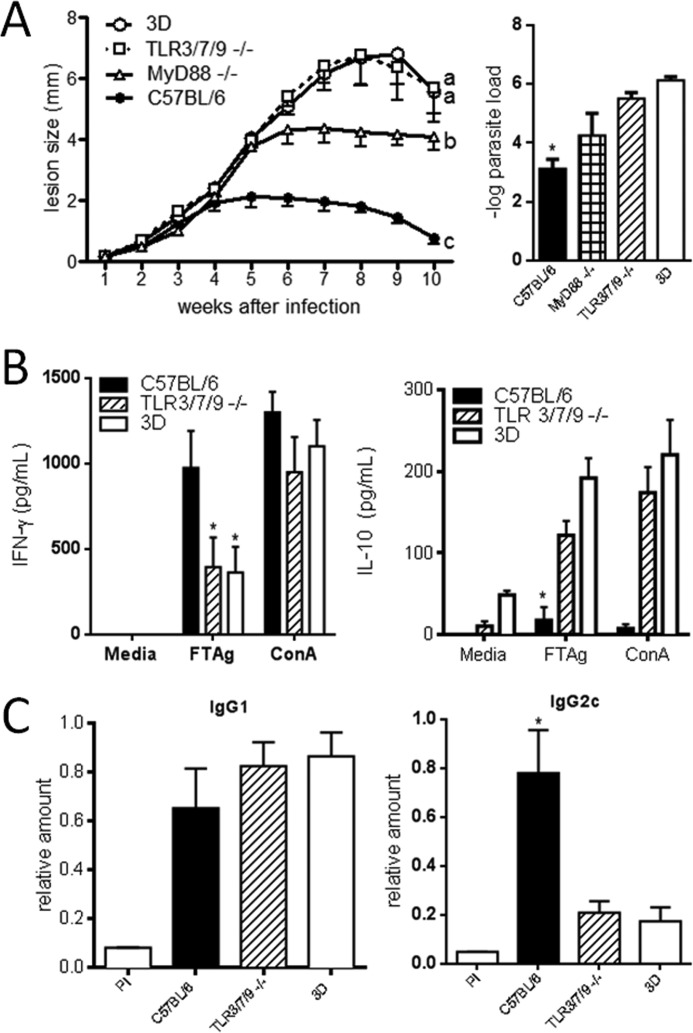FIGURE 5.
Severely impaired TH1 responses and susceptibility of TLR3/7/9 triple KO mice to infection with L. major. A, WT, UNC93B1 mutant, MyD88, and TLR3/7/9 triple KO mice were infected with 1 × 106 promastigotes subcutaneously in the right hind footpad. The course of infection was monitored weekly and the diameter of the primary footpad lesions was measured. The mean size of lesions and S.E. are shown (five mice per group). The letters a, b, and c indicate that lesion curve is significantly different when comparing UNC93B1 mutant and TLR3/7/9 KO mice to MyD88 KO and WT mice. Bar graphs correspond to the quantification of parasite load in the footpad lesions by limiting dilution analysis at week 10 post-infection. B, spleens were harvested from infected mice and cells cultured with no stimulation, under the stimuli of 1 × 106 FTAg or Concanavalin A. Accumulation of IFN-γ and IL-10 in culture supernatants, 48 h after antigen stimulation, was evaluated by ELISA assay as described under “Experimental Procedures.” Results are expressed as mean and S.E. of duplicate measurements of four animals per group. The presented data are representative of three independent experiments. C, serum was obtained from five animals per group, and the levels of circulating L. major specific IgG1 and IgG2c determined by ELISA. Data shown are mean ± S.E. and are representative of three independent experiments. Asterisks or different letters (a, b, c) indicate statistically significant differences after two-way ANOVA with Bonferroni's post test (p < 0.01) when comparing results from UNC93B1 mutant and TLR3/7/9 KO mice with WT and TLR7/9 KO mice.

